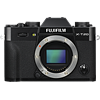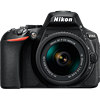Main
Model
Price
Advantages
launch
Announced
Body type
Camera subcategory
Sensor
Effective pixels
Max resolution
Sensor size
Sensor type
Processor
Image ratio w:h
Other resolutions
Sensor photo detectors
Image
ISO
Boosted ISO (minimum)
Boosted ISO (maximum)
White balance presets
Custom white balance
Image stabilization
Uncompressed format
JPEG quality levels
Photography features
Minimum shutter speed
Maximum shutter speed
Maximum shutter speed (electronic)
Aperture priority
Shutter priority
Manual exposure mode
Built-in flash
Flash range
External flash
Flash modes
Continuous drive
Self-timer
Metering modes
Exposure compensation
AE Bracketing
WB Bracketing
Subject / scene modes
Screen / viewfinder
Articulated LCD
Screen size
Screen dots
Touch screen
Screen type
Live view
Viewfinder type
Viewfinder coverage
Viewfinder magnification
Viewfinder resolution
Videography features
Resolutions
File Format
Microphone
Speaker
Optics & Focus
Autofocus
Manual focus
Number of focus points
Lens mount
Focal length multiplier
Physical
Weight (inc. batteries)
Dimensions
Environmentally sealed
Battery
Battery details
Battery Life (CIPA)
Storage
Storage types
Connectivity
USB
HDMI
Microphone port
Headphone port
Wireless
Wireless notes
Remote control
Other features
Orientation sensor
Timelapse recording
GPS
GPS notes
Samples
Videos
Summary
The Fujifilm X-T20 has more focus points than the Nikon D5600: 325 vs 39. More focus points means less risk of losing focus lock when following a moving subject.
The Nikon D5600 has swiveling display which will allow the camera owner to shoot images from any odd angle. The Nikon D5600 screen is better as it has more screen dots 1,037,000 in compare to 920,000 dots of the Fujifilm X-T20 screen. The higher dot count screen is better for reviewing images on your camera.
The X-T20 weighs 383g which is 82g less than the weight of the Nikon D5600.
Taking into account the above-mentioned differences the D5600 will be the best choice. Get the list of the best offers on Amazon.


